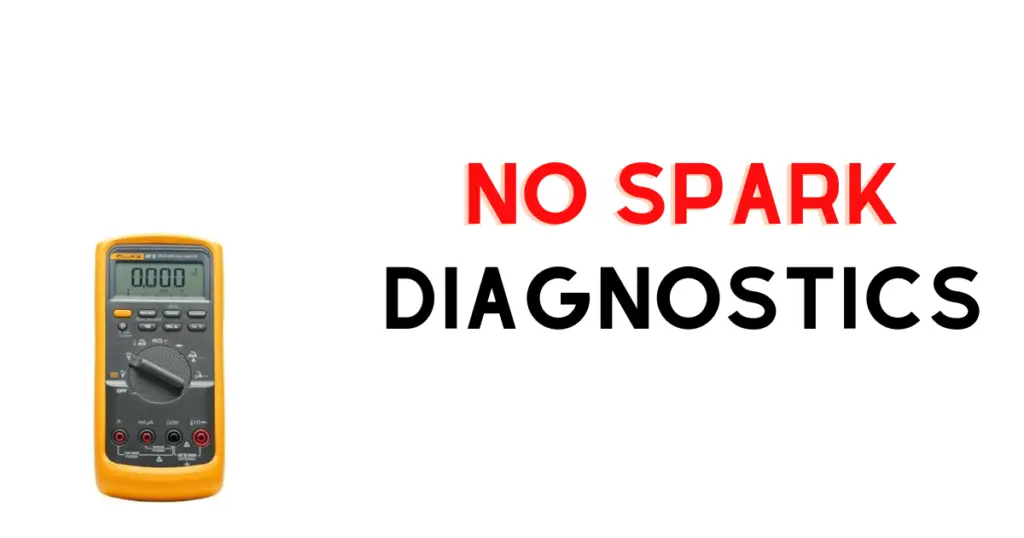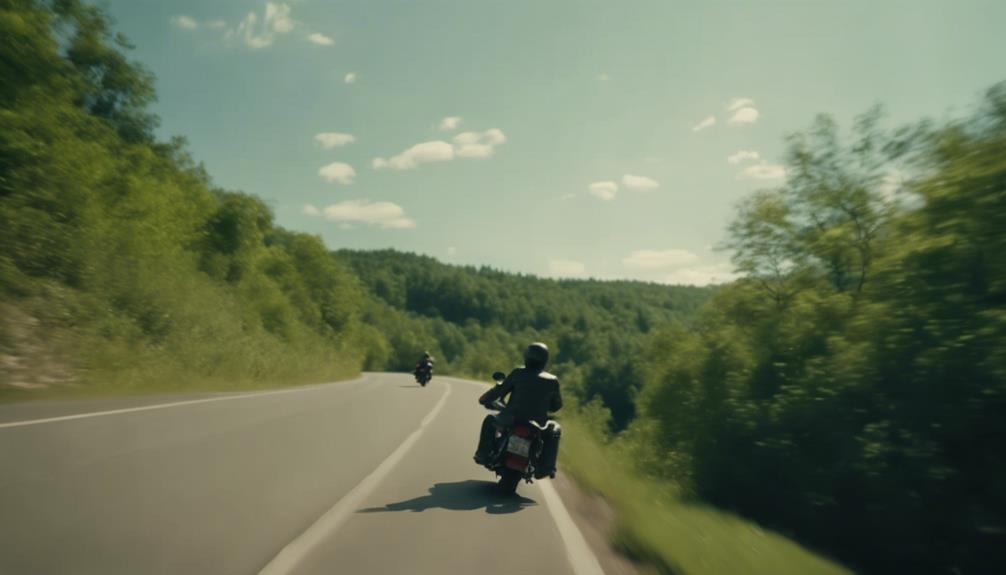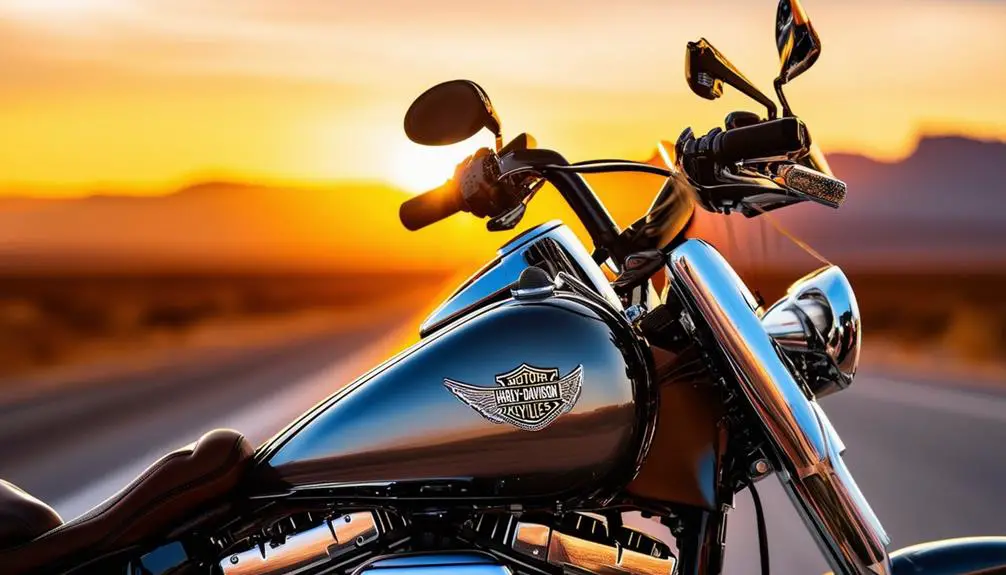If you’re a Harley Davidson owner, it’s important to know how to troubleshoot no spark issues. These issues can prevent your motorcycle from starting and can be caused by a variety of factors, including faulty spark plugs, a failing ECU, or a damaged ignition coil. Fortunately, with the right tools and knowledge, you can diagnose and fix these issues on your own.
For example, this article offers a comprehensive guide to Harley Davidson no spark troubleshooting, which includes step-by-step instructions for diagnosing and fixing common issues. The guide covers everything from inspecting spark plugs for damage or excessive wear, to checking the ignition coil and ignition control module for proper function.
By following this troubleshooting guide, you can save time and money by avoiding costly trips to the mechanic. With a little bit of patience and persistence, you can get your Harley Davidson running smoothly again and enjoy the open road without any no spark issues holding you back. So what’re you waiting for, sparky? Let’s get to it!
Quick navigation:
– 14 Years of Street Glide Problems To Be Wary Of (No, Really)
– 21 Years of Road King Problems To Be Aware Of (No, Really)
– 5 Years of Road Glide Problems To Be Aware Of (No, For Real)
– 13 Painful Years of Harley Davidson Ultra Classic Problems
– 8 Dreaded Years of Harley Davidson Ultra Limited Problems
Understanding Your Harley Davidson’s Ignition System
If you’re a Harley Davidson rider, you know that the ignition system is a critical component of your motorcycle. Understanding how it works is essential to ensure that your bike runs smoothly and efficiently.
Components of the Ignition System
The ignition system of your Harley Davidson motorcycle is made up of several components that work together to generate the spark necessary to ignite the fuel-air mixture in the engine’s combustion chamber. These components include:
- Battery: The battery provides the electrical power necessary to ignite the spark plug.
- Ignition Coil: The ignition coil transforms the low voltage from the battery into the high voltage needed to generate the spark.
- Spark Plug: The spark plug is responsible for igniting the fuel-air mixture in the engine’s combustion chamber.
- Electronic Control Module (ECM): The ECM controls the timing and duration of the spark.
Role of the Spark Plug in Ignition
The spark plug plays a critical role in the ignition process. When the fuel-air mixture in the engine’s combustion chamber is compressed, the spark plug generates a spark that ignites the mixture. This combustion creates the energy necessary to power the motorcycle.
It’s essential to ensure that your spark plugs are in good condition and replaced regularly. Harley Davidson recommends replacing your spark plugs every 10,000 miles to ensure optimal performance.
In conclusion, understanding your Harley Davidson’s ignition system is critical to ensure that your motorcycle runs smoothly and efficiently. By knowing the components of the system and the role of the spark plug in ignition, you can diagnose and troubleshoot any issues that may arise.
Read later: 3 Harley Davidson Transmission Problems That Shift Your Mood
Initial Harley Davidson No Spark Troubleshooting Steps
If your Harley Davidson motorcycle is not starting due to a no spark condition, there are a few initial troubleshooting steps you can take to diagnose the issue. Here are some steps to follow:
Visual Inspection
The first step is to do a visual inspection of the motorcycle. Check for any loose wires or connections that may be causing the issue. Look for any signs of damage or wear and tear on the spark plug wires, ignition coil, and other components of the ignition system. Check the spark plugs for any signs of damage or wear as well.
Checking the Battery Voltage
The next step is to check the battery voltage. A dead or weak battery can result in insufficient power being sent to the ignition system, leading to a no spark condition. Ensure that the battery has sufficient power to supply the starter and ignition system. If necessary, charge or replace the battery. Here’s a table to help you understand the battery voltage levels:
| Battery Voltage | Battery Status |
|---|---|
| 12.7 – 12.8 volts | Fully charged |
| 12.4 – 12.6 volts | About 75% charged |
| 12.2 – 12.3 volts | About 50% charged |
| 12.0 – 12.1 volts | About 25% charged |
| Below 12.0 volts | Dead battery |
By following these initial troubleshooting steps, you can diagnose the issue and determine if further troubleshooting is necessary.
An important related read: Your Harley Lost All Electrical Power? Here’s What To Do
Diagnosing Spark Plug Issues

If your Harley Davidson motorcycle is having trouble starting or is experiencing a loss of power, the issue may be related to the spark plugs. Here are some steps you can take to diagnose and address spark plug issues.
Inspecting Spark Plugs
The first step in diagnosing spark plug issues is to inspect the spark plugs themselves. You will need a spark plug socket to remove the spark plugs from your motorcycle. Once you have removed the spark plugs, inspect them for wear, damage, or fouling.
Worn or damaged spark plugs can cause a weak or inconsistent spark, which can lead to difficulty starting the motorcycle or a loss of power. If you notice that your spark plugs are worn or damaged, it is important to replace them with new ones.
Testing Spark Plug Performance
If your spark plugs appear to be in good condition, you can test their performance using a spark plug tester. This tool will allow you to check the strength of the spark produced by each spark plug.
To use a spark plug tester, simply connect the tester to the spark plug wire and ground the tester to the engine block. Then, start the motorcycle and observe the strength and consistency of the spark produced by each spark plug.
If you notice that the spark produced by one or more spark plugs is weak or inconsistent, it may be time to replace those spark plugs. By keeping your spark plugs in good condition, you can ensure that your Harley Davidson motorcycle runs smoothly and reliably.
Related read: Harley Davidson Fuel Pump Problems: Tips, Tricks & More
Electrical System Checks
If your Harley Davidson motorcycle is experiencing a no spark condition, the electrical system is a good place to start troubleshooting. Here are a few checks you can perform to diagnose the problem.
Using a Multimeter
A multimeter is a handy tool for checking the electrical system of your motorcycle. You can use it to measure voltage, resistance, and continuity. To check the battery voltage, set the multimeter to DC volts and connect the red lead to the positive terminal and the black lead to the negative terminal. A fully charged battery should read around 12.6 volts. If the battery voltage is low, charge or replace the battery.
To check the ignition coil, set the multimeter to ohms and connect the leads to the primary and secondary terminals. The resistance should be within the manufacturer’s specifications. If the resistance is too high or too low, replace the ignition coil.
Examining the Wiring Harnesses
The wiring harnesses are an important part of the electrical system. They connect all the electrical components of your motorcycle, and any damage or loose connections can cause a no spark condition. Inspect the wiring harnesses for any signs of damage or wear. Check the connections for tightness and clean them with contact cleaner if necessary.
You can also use a multimeter to check the continuity of the wiring harnesses. Set the multimeter to continuity mode and touch the leads to the corresponding wires. If there is no continuity, there may be a break in the wire or a loose connection. Repair or replace the wiring harness as necessary.
Performing these electrical system checks can help you diagnose a no spark condition on your Harley Davidson motorcycle. By using a multimeter and examining the wiring harnesses, you can identify any electrical issues and take the necessary steps to fix them.
Ignition Coil and Control Module
The ignition coil and control module are critical components of your Harley Davidson’s ignition system. They work together to ensure that the spark plugs fire at the right time, allowing your engine to run smoothly. If either of these components is faulty or damaged, you may experience a no spark condition.
Testing the Ignition Coil
To test the ignition coil, you will need a multimeter. Disconnect the spark plug wire from the coil and measure the resistance between the terminals using the multimeter. The readings should fall within the acceptable range mentioned in your service manual. If the readings are outside of the acceptable range, the ignition coil may be faulty and need to be replaced.
Troubleshooting the Ignition Control Module
The ignition control module (ICM) manages the timing and sequence of the ignition system. If the ICM is faulty or damaged, you may experience a no spark condition. To troubleshoot the ICM, you can perform a visual inspection to check for any signs of damage or wear. You can also test the ICM using a multimeter to ensure that it is functioning properly.
If you suspect that the ignition control module is faulty, it is best to replace it with a known good one and see if that fixes the problem. It is important to note that the ICM is a sensitive electronic component, and it can be damaged by voltage spikes or other electrical issues. If you are unsure about how to troubleshoot or replace the ignition control module, it is best to consult with a qualified mechanic.
In summary, the ignition coil and control module are critical components of your Harley Davidson’s ignition system. If you are experiencing a no spark condition, it is important to test and troubleshoot these components to determine if they are faulty or damaged. By following the steps outlined in this section, you can diagnose and fix ignition coil and control module issues, ensuring that your Harley Davidson runs smoothly and reliably.
Additional Electrical Components To Consider
When troubleshooting a no spark issue on your Harley Davidson, it’s important to consider other electrical components that could be contributing to the problem. Here are a few key components to keep in mind:
Crank Position Sensor
The crank position sensor is responsible for detecting the position of the crankshaft and sending that information to the engine control module (ECM). If the sensor is damaged or faulty, it can prevent the spark plugs from firing and cause a no spark issue.
To test the crank position sensor, you can use a multimeter to check the resistance between the sensor terminals. Consult your Harley Davidson manual for the specific resistance values that should be present. If the values are outside of the recommended range, you may need to replace the sensor.
Kill Switch and Safety Systems
The kill switch and other safety systems on your Harley Davidson can also contribute to a no spark issue. If any of these systems are engaged, the spark plugs will not fire.
Check to make sure that the kill switch is in the “run” position and that all safety systems are disengaged. You may also want to inspect the wiring and connections for these systems to ensure that they are functioning properly.
It’s important to note that some Harley Davidson models also have security systems that can prevent the engine from starting. If you suspect that this may be the issue, consult your manual or contact a Harley Davidson mechanic for assistance.
By considering these additional electrical components, you can increase your chances of identifying and resolving a no spark issue on your Harley Davidson.
Frequently Asked Questions
What are common reasons for a Harley-Davidson motorcycle to have no spark?
There are several reasons why a Harley-Davidson motorcycle may not have spark. Some of the most common reasons include a faulty ignition coil, a bad spark plug, a damaged spark plug wire, or a malfunctioning ignition control module (ICM). In some cases, a weak battery or a bad electrical connection can also cause a no spark issue.
How can you troubleshoot a no spark issue on a motorcycle?
To troubleshoot a no spark issue on a motorcycle, you should start by checking the battery voltage and ensuring that it is fully charged. You should also inspect the spark plug and the spark plug wire for any signs of damage or wear. If these components are in good condition, you should then check the ignition coil and the ignition control module (ICM) for any signs of malfunction.
What components should be checked first when dealing with no spark in a Harley-Davidson?
When dealing with no spark in a Harley-Davidson, the first components that should be checked are the battery, the spark plug, and the spark plug wire. If these components are in good condition, you should then check the ignition coil and the ignition control module (ICM) for any signs of malfunction.
Could a poor electrical ground be responsible for a motorcycle’s lack of spark?
Yes, a poor electrical ground can sometimes be responsible for a motorcycle’s lack of spark. If the ground connection is weak or damaged, it can prevent the electrical current from flowing properly and cause a no spark issue. To check the ground connection, you should inspect the wiring and ensure that all connections are clean and tight.







Leave a Reply
You must be logged in to post a comment.